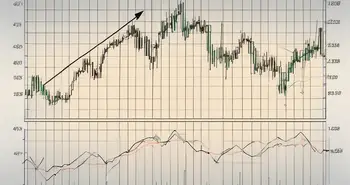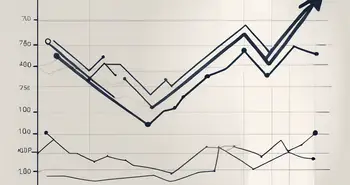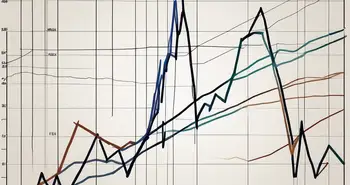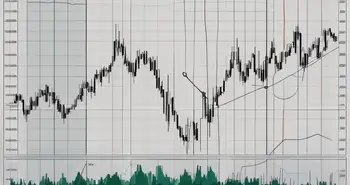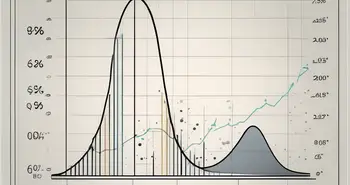Understanding the Directional Movement Index: A Comprehensive Guide

As an experienced trader, I can confidently say that understanding the Directional Movement Index (DMI) is crucial for success in the financial markets. This comprehensive guide will provide you with all the essential information you need to know about the DMI and how to utilize it in your trading strategies. So, let's dive in!
What is the Directional Movement Index?
The Directional Movement Index, also known as DMI, is a technical indicator that helps traders identify and analyze the strength and direction of a trend. Developed by J. Welles Wilder, Jr., this powerful tool allows traders to gauge the bullish or bearish nature of the market and make informed decisions accordingly.
The DMI consists of three key components: the Positive Directional Indicator (+DI), the Negative Directional Indicator (-DI), and the Average Directional Index (ADX). Each of these components plays an important role in understanding market trends and predicting price movements.
The Concept Behind the Directional Movement Index
At its core, the concept behind the DMI lies in identifying the dominant force in the market – either the bulls or the bears. By comparing upward and downward price movements, the DMI provides insights into the strength and momentum of the market participants.
Key Components of the Directional Movement Index
The Positive Directional Indicator (+DI) measures the upward price movement, indicating the bullish sentiment in the market. It helps traders identify potential entry points for long positions.
The Negative Directional Indicator (-DI), on the other hand, measures the downward price movement, indicating the bearish sentiment. It assists traders in identifying potential entry points for short positions.
The Average Directional Index (ADX) serves as a filter, smoothing out the price movements and providing an overall measure of trend strength. A high ADX value indicates a strong trend, while a low ADX value suggests a weak or sideways market.
The Importance of the Directional Movement Index in Trading
Now, let's explore why the Directional Movement Index is a valuable tool for traders.
Predicting Price Movements with DMI
One of the primary uses of the DMI is to predict future price movements. By analyzing the crossover between the +DI and -DI lines, traders can anticipate potential trend reversals and adjust their trading positions accordingly. For instance, when the +DI line crosses above the -DI line, it signals a bullish trend, while a crossover in the opposite direction indicates a bearish trend.
As an expert trader, I have found the DMI to be highly reliable in identifying trend continuations and reversals. This indicator has helped me capitalize on profitable opportunities and avoid entering trades that go against the prevailing market sentiment.
Understanding Market Trends through DMI
Another essential aspect of the DMI is its ability to provide insights into market trends. By observing the ADX value, traders can determine the strength of the current trend. A rising ADX suggests a strengthening trend, while a declining ADX indicates a weakening trend or a potential market consolidation phase.
The DMI has been instrumental in helping me identify market trends and make informed trading decisions. By combining the ADX with the +DI and -DI lines, I have been able to establish a holistic view of the market and adapt my strategies accordingly.
How to Calculate the Directional Movement Index
Step-by-Step Calculation of DMI
Calculating the Directional Movement Index may seem daunting at first, but it is relatively straightforward once you understand the process. Here are the steps involved:
- Calculate the True Range (TR), which represents the maximum of the following three values: the current high minus the current low, the absolute value of the current high minus the previous close, and the absolute value of the current low minus the previous close.
- Calculate the Plus Directional Movement (+DM) by comparing the current high with the previous high. If the current high is higher, the +DM equals the current high minus the previous high. Otherwise, it is zero.
- Calculate the Minus Directional Movement (-DM) by comparing the previous low with the current low. If the current low is lower, the -DM equals the previous low minus the current low. Otherwise, it is zero.
- Smooth these values over a specific period using a Wilder's Moving Average.
- Finally, calculate the +DI and -DI values by dividing the smoothed +DM and -DM values by the smoothed True Range and multiplying them by 100.
Interpreting the DMI Values
Interpreting the DMI values is crucial for understanding market trends and making informed trading decisions. Here's a quick guide:
- When the +DI is above the -DI, it indicates a bullish trend, suggesting the dominance of buyers in the market.
- Conversely, when the -DI is above the +DI, it indicates a bearish trend, suggesting the dominance of sellers in the market.
- The ADX value provides an overall measure of trend strength. A value above 25 suggests a strong trend, while a value below 20 indicates a weak or sideways market.
Using the Directional Movement Index in Trading Strategies
Incorporating DMI into Your Trading Plan
Now that you understand the basics of the Directional Movement Index, it's time to explore how you can incorporate it into your trading plan. Here are a few tips:
- Use the DMI to confirm your trading signals. For example, if you receive a buy signal from another indicator, such as the Moving Average Crossover, check to see if the +DI is above the -DI to confirm the bullish bias.
- Consider using the ADX as a filter to avoid trading in weak or sideways markets. Wait for the ADX to rise above a specific threshold, such as 25, before entering trades.
- Combine the DMI with other technical indicators, such as the Relative Strength Index (RSI) or Bollinger Bands, to gain a more comprehensive view of the market.
By incorporating the DMI into your trading plan, you can increase your chances of success and minimize the impact of false signals.
Tips for Maximizing DMI in Trading
Here are some additional tips to help you maximize the effectiveness of the Directional Movement Index:
- Keep an eye on the slope of the +DI and -DI lines. A steep upward slope indicates a strong trend, while a flat or declining slope suggests a weakening trend.
- Practice proper risk management techniques, such as setting stop-loss orders and adhering to your risk tolerance levels.
- Regularly review and fine-tune your trading strategies to adapt to changing market conditions.
As an expert trader, I want to emphasize the importance of continuous learning and refinement. Don't be afraid to test different variations of the DMI and experiment with other indicators to find what works best for you.
Common Misconceptions about the Directional Movement Index
Debunking DMI Myths
Like any other technical indicator, the Directional Movement Index is not foolproof, and there are some common misconceptions surrounding its usage. Let's debunk a few of these myths:
- Myth #1: DMI alone can guarantee profitable trades. Reality: The DMI is just one tool in your trading toolbox. It should be used in conjunction with other indicators and analysis methods for accurate decision-making.
- Myth #2: DMI always accurately predicts trend reversals. Reality: While the DMI is a valuable trend reversal indicator, it is not infallible. It's essential to consider other aspects, such as market sentiment and fundamental analysis, when making trading decisions.
Avoiding Common DMI Mistakes
To ensure you make the most out of the DMI, here are a few mistakes to avoid:
- Mistake #1: Overlooking the overall market context. It's crucial to analyze the broader market conditions and take into account factors that could influence the direction of the trend.
- Mistake #2: Relying solely on the DMI for trade entries and exits. Always use the DMI in combination with other technical indicators and analysis tools to confirm your trading signals.
Remember, mastering the Directional Movement Index takes time and practice. By avoiding common mistakes and continuously honing your skills, you'll be well on your way to trading success.
FAQ
What is the Directional Movement Index?
The Directional Movement Index (DMI) is a technical indicator that helps traders identify and analyze the strength and direction of a trend. It consists of three key components: the Positive Directional Indicator (+DI), the Negative Directional Indicator (-DI), and the Average Directional Index (ADX).
How can the DMI be used in trading strategies?
The DMI can be incorporated into trading strategies in various ways. It can help confirm trading signals, filter out weak or sideways markets, and provide insights into trend strength. When combined with other indicators, the DMI can enhance trading decision-making.
What are common misconceptions about the DMI?
Some common misconceptions about the DMI include believing that it alone can guarantee profitable trades and always accurately predicting trend reversals. It's important to recognize the limitations of the DMI and consider other factors in your trading analysis.
What are some common mistakes to avoid when using the DMI?
When using the DMI, it's crucial to avoid overlooking the overall market context and relying solely on the DMI for trade entries and exits. Considering the broader market conditions and using the DMI in combination with other indicators will lead to more informed trading decisions.
Now that you have a comprehensive understanding of the Directional Movement Index, it's time to put your knowledge into practice. Remember, the DMI is just one tool in your trading arsenal, and it's essential to continuously learn, adapt, and refine your strategies. Happy trading!
Ready to elevate your trading with the insights from the Directional Movement Index? Join Morpher, the revolutionary trading platform that harnesses blockchain technology for a seamless, fee-free trading experience. Whether you're interested in stocks, cryptocurrencies, or even niche markets like NFTs and sneakers, Morpher offers the flexibility of fractional investing, short selling without interest fees, and up to 10x leverage to maximize your strategies. Sign up now at Morpher.com and receive your free sign-up bonus to start trading on a platform as innovative as your trading approach. Embrace the future of investing with Morpher.

Disclaimer: All investments involve risk, and the past performance of a security, industry, sector, market, financial product, trading strategy, or individual’s trading does not guarantee future results or returns. Investors are fully responsible for any investment decisions they make. Such decisions should be based solely on an evaluation of their financial circumstances, investment objectives, risk tolerance, and liquidity needs. This post does not constitute investment advice.

Painless trading for everyone
Hundreds of markets all in one place - Apple, Bitcoin, Gold, Watches, NFTs, Sneakers and so much more.

Painless trading for everyone
Hundreds of markets all in one place - Apple, Bitcoin, Gold, Watches, NFTs, Sneakers and so much more.


